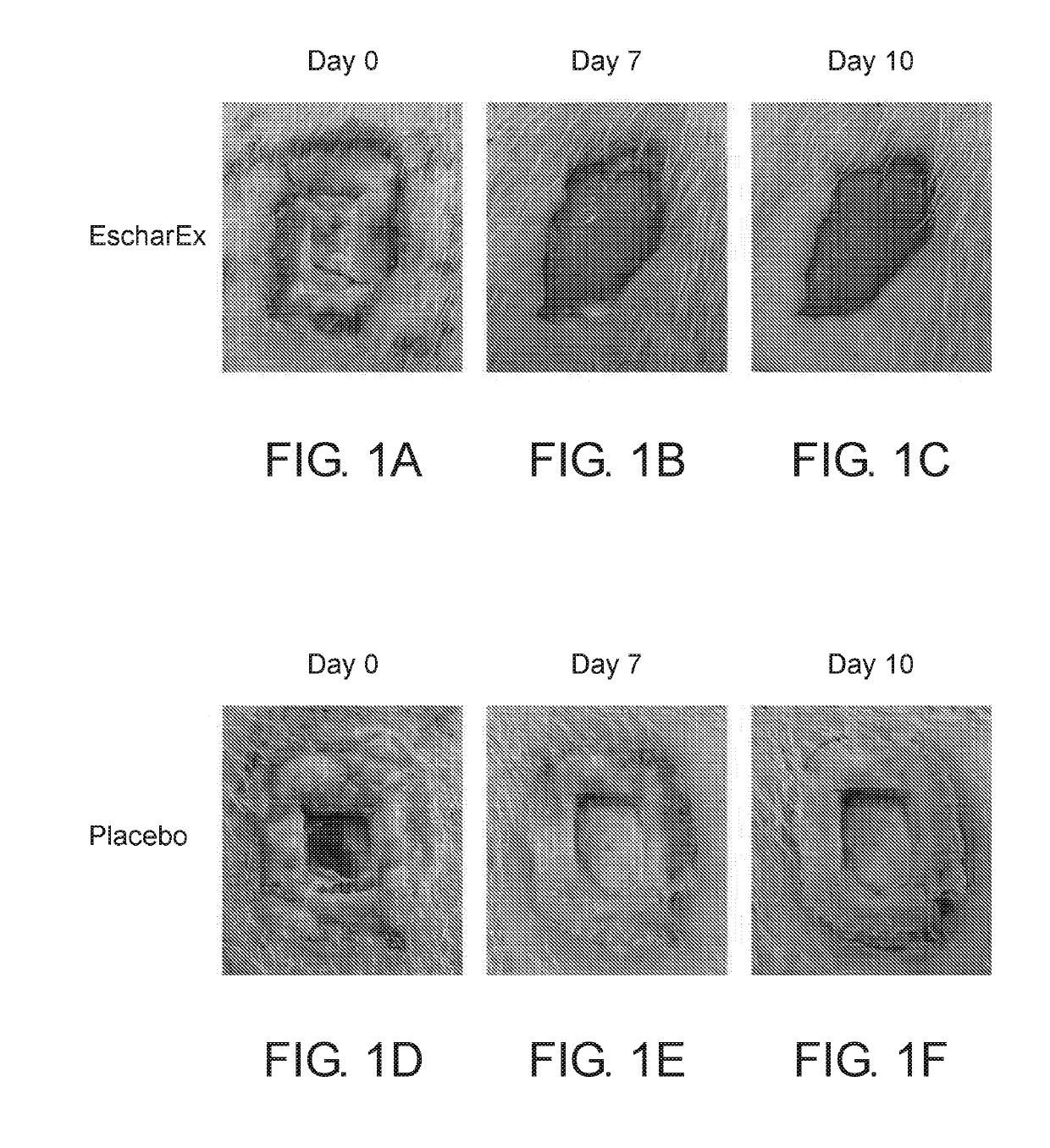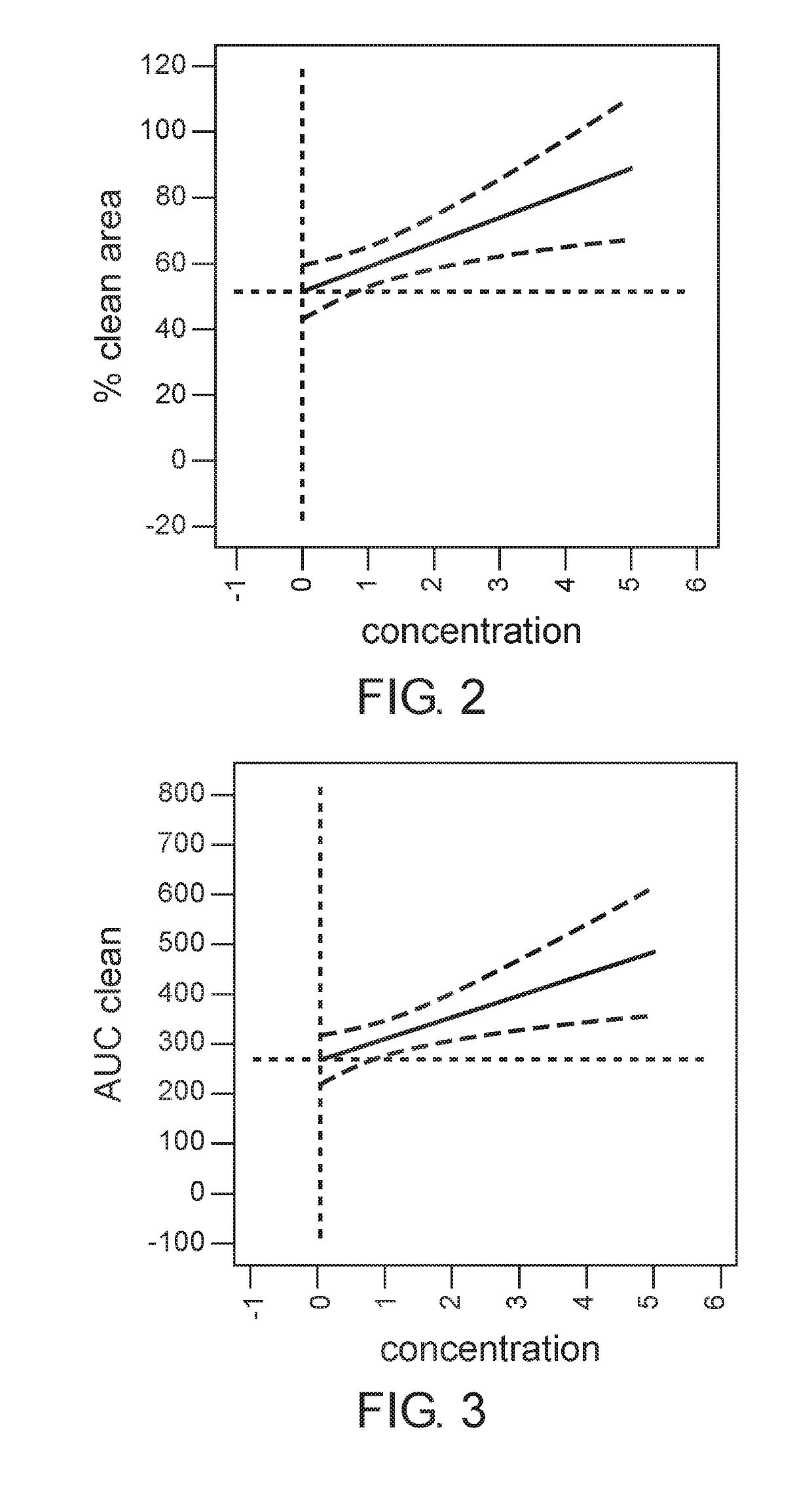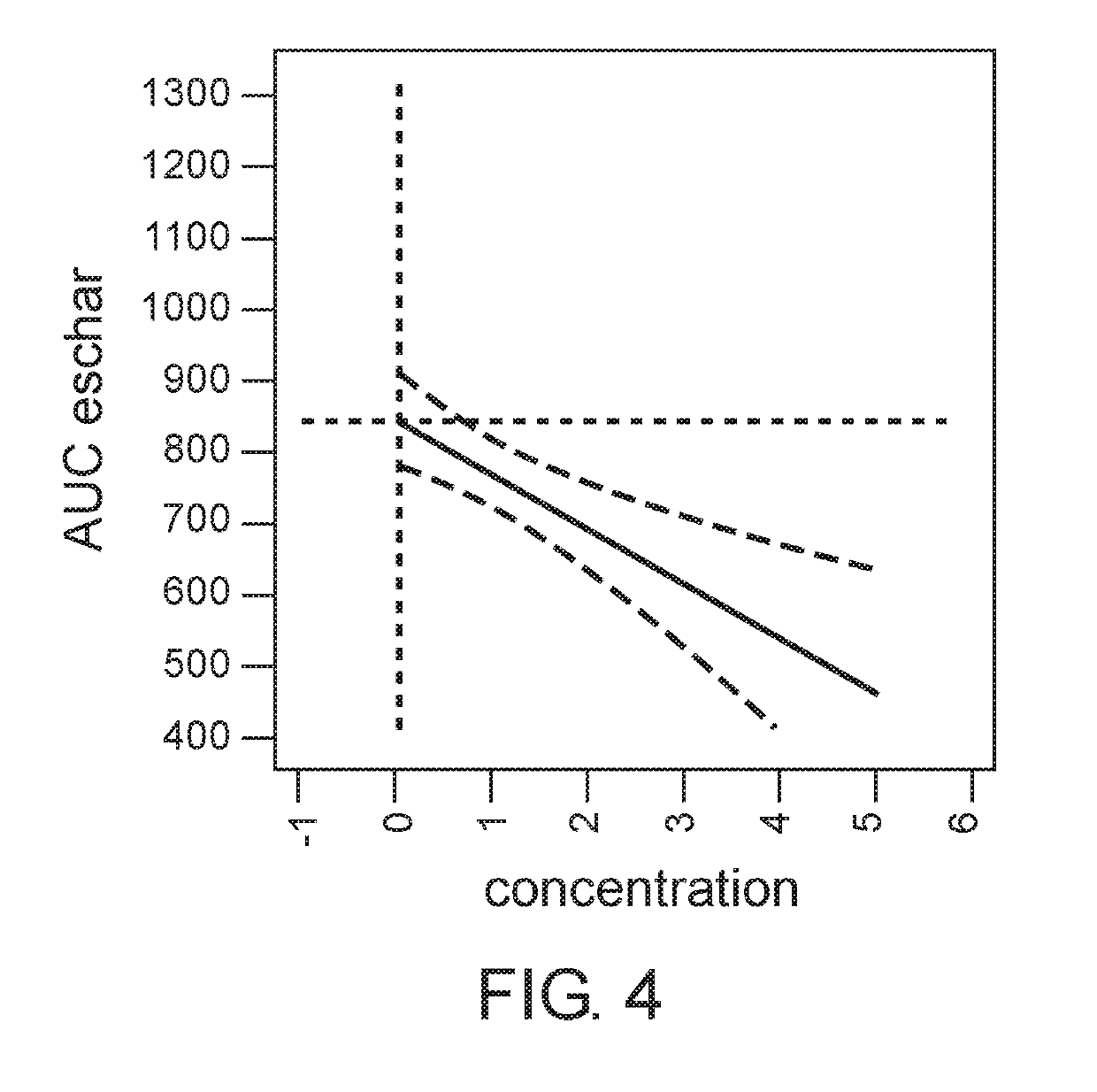Methods of debridement of chronic wounds
a chronic wound and debridement technology, applied in the field of wound debridement, can solve the problems of severe skin damage, difficult wound healing, and affecting millions of people annually, and achieve the effects of effective debridement of non-viable tissue, high efficacy of enzymatic debriding agent, and simple and fast treatmen
- Summary
- Abstract
- Description
- Claims
- Application Information
AI Technical Summary
Benefits of technology
Problems solved by technology
Method used
Image
Examples
example 1
Gel Formulation
[0185]The following debriding formulations were developed:
% (w / w) inIngredientformulationFunctionProteolytic enzyme mixture5* Active ingredientsobtained from bromelain(API)(API)Guar gum3.5Gelling agentLactose15** Anti-agglomerationagentPotassium phosphate dibasic2.5pH adjusting agentPotassium phosphate0.8pH adjusting agentmonobasicPEG-33502 Anti-foaming agentWater for injectionCompleteto 100%*Other amounts of API (w / w) which were evaluated: 0.1%; 0.5%; 1%; and 2%.**The amount of lactose was adjusted according to the amount of API.
[0186]The debriding formulations were prepared by admixing the dried or powdered composition which contained API, guar gum, lactose, potassium phosphate dibasic and monobasic, and PEG-3350, with water to form the hydrogel having a homogenous appearance and which has a viscosity ranging from 2,40,000 cP to 6,200,000 cP.
example 2
Debridement of Eschar by the Gel Formulation
[0187]The aim of this study was to determine the dose of the active ingredients in the gel formulation which provides maximal efficacy of eschar debridement of chronic wounds.
[0188]A chronic wound model was established in crossbred domestic pigs.
[0189]Prior to application of the gel formulation, wound edges were protected with thick layer of Vaseline. Each wound site received ˜2 g of the gel formulation to cover the wound for 24 hours, and bandaged with non absorbing dressing. Each wound was photographed before and after each application. The following doses were examined: placebo (0%), 0.1%, 0.5%, 1%, 2%, 5%.
[0190]This procedure was followed for up to 11 consecutive daily treatments or until clean wound bed was achieved. This period was denoted the “Treatment period”. The treatment period was followed by two weeks “recovery period” with no treatments. In the recovery period the wounds were photographed 3 times a week.
[0191]The wound area,...
example 3
Efficacy and Safety of API in the Gel Formulation—Clinical Study
[0207]The aim of this study is to assess the safety and the efficacy of two doses: 2% (w / w) and 5% (w / w) of the gel formulation disclosed herein above in Example 1, also designated EX-02, compared to placebo in debridement of chronic venous leg ulcers and of diabetic lower extremity ulcers.
[0208]The study is a multicenter, prospective, randomized, placebo controlled, double-blind, international study.
[0209]Adults with >50% necrotic / slough / fibrin non-viable tissue on a chronic wound (venous leg ulcer, diabetic lower extremity ulcer) between 3 cm2 and 200 cm2 (surface area) are enrolled into the study.
[0210]Patients are randomized to EX-02 Low dose (2% w / w), EX-02 high dose (5% w / w), or Placebo treatment group. Treatment is performed three times a week up to 10 applications (up to 10 visits) or until complete debridement is achieved, whichever occurs first. The duration of each application is 24±2 hours or three times a w...
PUM
| Property | Measurement | Unit |
|---|---|---|
| Fraction | aaaaa | aaaaa |
| Fraction | aaaaa | aaaaa |
| Fraction | aaaaa | aaaaa |
Abstract
Description
Claims
Application Information
 Login to View More
Login to View More - R&D Engineer
- R&D Manager
- IP Professional
- Industry Leading Data Capabilities
- Powerful AI technology
- Patent DNA Extraction
Browse by: Latest US Patents, China's latest patents, Technical Efficacy Thesaurus, Application Domain, Technology Topic, Popular Technical Reports.
© 2024 PatSnap. All rights reserved.Legal|Privacy policy|Modern Slavery Act Transparency Statement|Sitemap|About US| Contact US: help@patsnap.com










